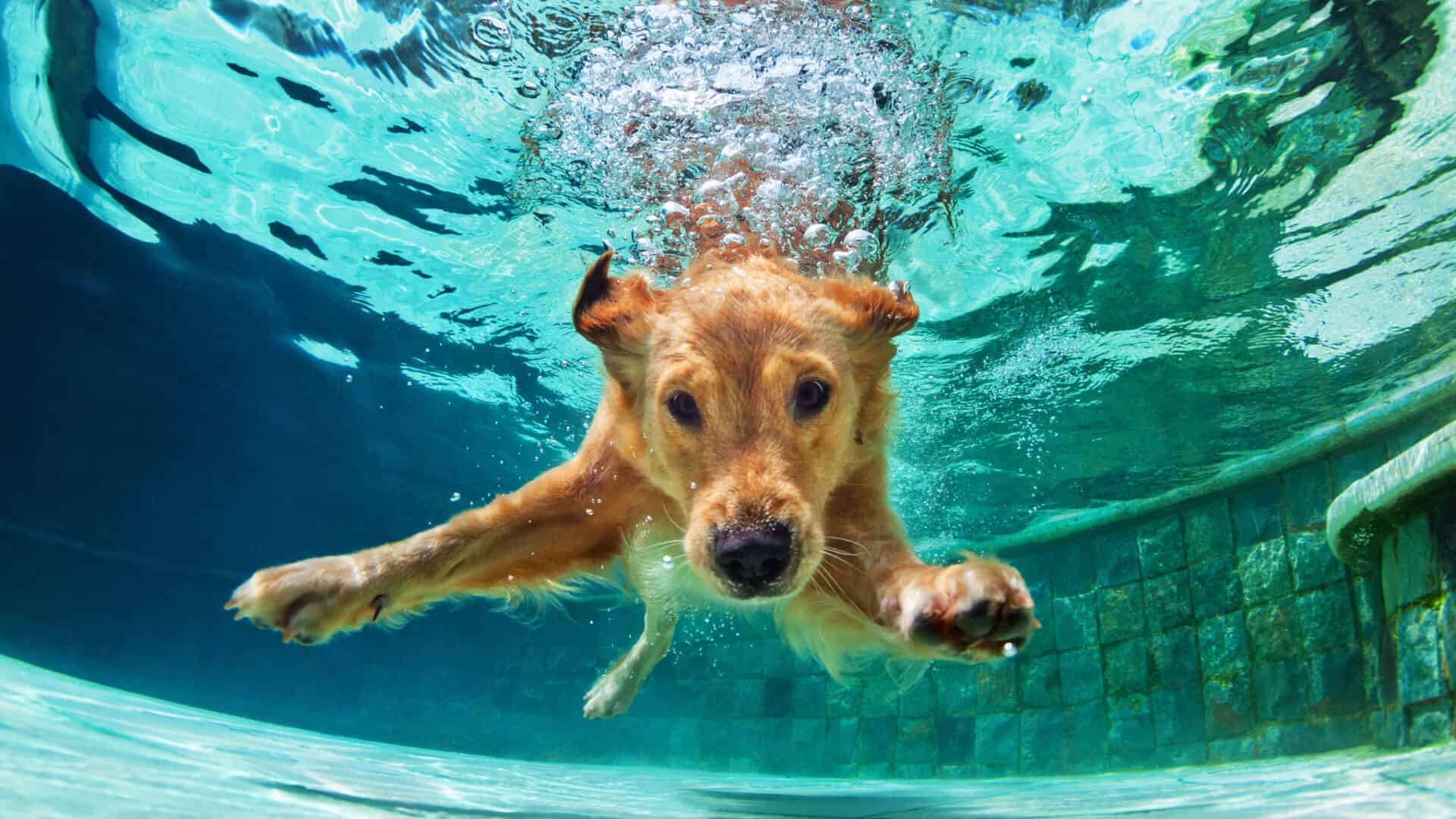How Do Pool Chemicals Affect a Dog’s Coat?

What are the Effects of Pool Chemicals on Your Dog’s Fur Coat?
You may want to let your dogs jump into your pool to swim with the family, but that’s not necessarily the best idea. While many dog breeds love the water as much as we do, it’s important to consider how pool chemicals, particularly chlorine, affect their coats and overall well-being.
It may feel obvious to say that just like humans, a dog shouldn’t be in a pool after you’ve shocked it. But because of their fur, they can’t necessarily stay in the pool as long, even when it’s safe. Their fur can retain pool water, unlike human hair. With chlorine watertight against their skin, it can pose some dangers.
The pool experts at Aqua Leisure Pools and Spas can explain. If you want a safe and enjoyable swimming experience for your pets, we can help. Here, you’ll learn about the impact of pool chemicals on a dog’s coat and discover practical tips to keep your pets safe and healthy.
How Chlorine Affects a Dog’s Coat
Chlorine is the most common chemical used to keep swimming pools clean and safe for human use. However, it can have several adverse effects on a dog’s coat. One of the primary concerns is dryness. Chlorine strips away the natural oils in a dog’s coat, leaving it dry and dull. This lack of moisture can make the fur look lifeless and more susceptible to damage.
In addition to dryness, chlorine can cause discoloration in a dog’s fur. Dark-coated dogs may experience slight bleaching, while lighter coats could take on a greenish tint after prolonged exposure. This color change is due to the chemical reaction between chlorine and the pigments in the fur.
Brittleness is another issue caused by chlorine. Continuous exposure can make a dog’s coat more fragile, leading to breakage and split ends. This brittleness, combined with itchiness from chlorine irritation, can result in over-grooming. Dogs might scratch or chew on their skin excessively, potentially leading to hair loss or skin infections. Dog owners must be aware of these risks when allowing their pets to swim in chlorinated pools.
Mitigating the Effects of Chlorine on Dogs
Thankfully, there are ways to mitigate the negative effects of chlorine on your dog’s coat so they can enjoy the family pool, too. First, consider limiting the amount of time your dog spends in the pool each day. Shorter swimming sessions can help reduce chlorine exposure and minimize potential damage to the coat and skin.
After each swim, bathe your dog thoroughly with fresh water and a gentle dog shampoo. This helps wash away the residual chlorine and restores the natural oils in the coat. Don’t forget to condition your dog’s fur with a canine-friendly moisturizer to keep the coat hydrated and healthy.
Proper pool chemical storage is essential for safety. Always store chlorine tablets in their original containers and keep them in a place inaccessible to pets and children. It’s also important to regularly check the chemical balance of your pool, especially after your dog has been swimming. They have different natural oils from humans and can imbalance a pool differently. This way, you can ensure a safe environment for both humans and animals.
Pet-Friendly Pool Chemical Alternatives
For those concerned about the effects of chlorine on their dogs, there are pet-friendly pool chemical alternatives available. These options can provide a safer swimming environment without compromising your pool’s cleanliness and hygiene.
One alternative is switching to a saltwater pool system. Saltwater systems use electrolysis to convert salt into chlorine, resulting in lower chlorine levels compared to traditional pools. This gentle approach is less likely to irritate a dog’s coat and skin and is better for human skin overall.
Another option is using UV pool sanitizers. These systems use ultraviolet light to kill bacteria and algae without the need for harsh chemicals. While UV sanitizers may not eliminate chlorine, they do significantly reduce the amount a pool needs, making the pool water more pet-friendly.
Exploring these alternatives can help maintain a safe swimming environment for your pets while ensuring the pool remains clean and hygienic.
Pool Safety Tips for Pets
In addition to chemical considerations, general pool safety is vital for pet owners. Always supervise your dog when they are near or in the pool. Even strong swimmers can encounter difficulties, so never leave them unattended.
Training your dog to enter and exit the pool safely is crucial. Teach them where the pool steps or ladder are located, and practice using them regularly. This familiarity can help prevent accidents and ensure your dog is comfortable around the pool.
It’s also important to recognize the signs of chlorine poisoning in dogs. Symptoms can include vomiting, diarrhea, coughing, or difficulty breathing. If you notice any of these signs, seek veterinary assistance immediately. Being proactive about pool safety can help protect your dog from potential hazards.
Contact Aqua Leisure Pools and Spas For More Information About Pool Chemicals
Understanding the effects of pool chemicals on a dog’s coat is essential for pet and pool owners. By taking proactive measures, such as limiting swim time, using pet-friendly alternatives, and practicing general pool safety, you can ensure a safe and enjoyable experience for your furry friend.
For more information, contact the pool experts at a local Aqua Leisure Pools and Spas near you.
Posted by Aqua Leisure Pools & Spas in Pools

